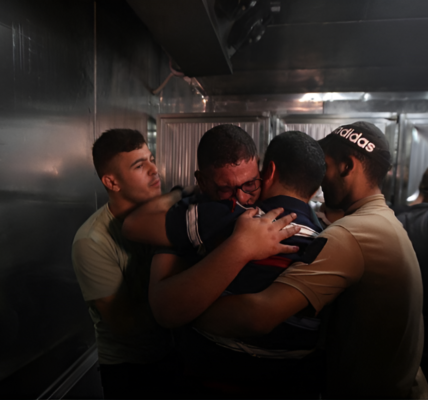
The Global War on Terror (GWOT) is widely discredited today, yet Washington still struggles to agree on why. Was the U.S. failure a result of trying to reshape foreign societies by force, or was it an overly ambitious attempt to impose the country’s ideals globally?
In the wake of 9/11, both neoconservative and liberal narratives forged a bipartisan commitment to military intervention as a response to terrorism, believing the solution was to transform the countries where terrorism thrived, particularly in the Middle East. But when Iraq descended into chaos and Afghanistan proved an intractable conflict, anti-interventionist critics from both the right and the left began gaining traction, rejecting the notion of reshaping foreign societies and questioning military intervention in general.
Now, as the war on terror’s vision has been largely abandoned, the failure of this interventionist stance has become a defining crisis for the U.S. political establishment. The Iraq War became a political liability, with figures like Hillary Clinton and Jeb Bush paying the price for their earlier support. Both Donald Trump and Bernie Sanders found political momentum by criticizing the establishment’s misguided approach to terrorism, which sidelined domestic issues. Even former interventionist intellectuals have shifted their focus, prioritizing the defense of liberal democracy over foreign nation-building.
In short, the constituency for global transformation through U.S. intervention has collapsed. In response, the Obama, Trump, and Biden administrations have all worked to limit military interventions. But as President Biden faces increasing pressure to secure support for his policy in Ukraine, it’s evident that the global war on terror and its aftermath have fundamentally shaped the current debates over U.S. foreign policy.
The Neoconservative and Liberal Interventionist Consensus
In the early years of the GWOT, the dominant view came from the right. Neoconservatives in the Bush administration, along with the Republican Party and conservative intelligentsia, argued that terrorism was a problem exacerbated by state sponsorship. Groups like al-Qaeda could not thrive without protection from sovereign states, and they could become even more deadly with resources like unconventional weapons. Thus, the war on terror was aimed at both dismantling terrorist organizations and targeting state sponsors, such as Afghanistan and Iraq.
A core element of the neoconservative vision was the idea that showing U.S. power and resolve was necessary to deter future threats. The Vietnam War had left many conservatives feeling that the U.S. image as a declining power invited abuses. U.S. military dominance, they argued, would discourage further attacks. As Defense Secretary Donald Rumsfeld put it on 9/11 itself: “We need to bomb something else…to prove that we’re big and strong.”
Crucially, neoconservatives also embraced moral universalism—believing that transforming foreign societies, especially in the Middle East, was key to ending terrorism. They believed that modern jihadist terrorism was rooted in radical Islamism, which could only be quelled by spreading liberal democracy to the region. According to this view, countries like Iraq could serve as models for political transformation that would ultimately eliminate the roots of extremism.
On the other hand, liberal interventionists, while differing from neoconservatives on some key issues, largely shared the same vision of global transformation. Thinkers like George Packer and Thomas Friedman critiqued Bush’s unilateralism but agreed that the Middle East’s democratic deficit contributed to terrorism and that intervention was necessary. However, liberals were more likely to advocate for multilateralism, human rights, and economic justice, aiming to address not only political oppression but also social inequality and environmental concerns.
Despite their differences, both camps were committed to the belief that U.S. power could be used to spread democracy and bring stability to a region suffering from terrorism. In 2003, for example, Packer declared, “A liberal foreign policy starts with the idea that the things U.S. liberals want for themselves should be America’s goal for the rest of the world.”
Nationalist and Leftist Anti-Interventionism
As the years wore on and the failures of Iraq and Afghanistan became undeniable, alternative critiques of the GWOT began to gain ground. Nationalists, led by figures like Patrick Buchanan and Samuel Huntington, rejected the notion that the U.S. could or should try to impose its values on the Middle East. They argued that the U.S. should focus on securing its own borders and defending its citizens rather than engaging in nation-building efforts abroad. These critics rejected universalism in favor of a more pragmatic approach to foreign policy—one that prioritized American interests over global transformation.
Nationalists criticized the GWOT as an overreach, arguing that it was a futile attempt to spread Western values to regions where they were not welcomed. They believed that the wars in Iraq and Afghanistan only exacerbated tensions and created more instability. Many nationalists also saw the U.S. government’s expansion of power during the GWOT as a betrayal of its founding principles.
On the left, critiques of the GWOT focused on U.S. foreign policy’s role in generating the very terrorism it sought to combat. Figures like Susan Sontag argued that 9/11 was not an unprovoked attack but rather a consequence of U.S. actions in the Middle East. The left, like the nationalists, believed that U.S. interventionism provoked more terrorism and should be curtailed. For many on the left, the solution was not to expand military action but to scale back U.S. power in the world, end military support for dictatorships, and halt imperialist ventures.
Despite significant differences in approach, both nationalists and leftists shared a common critique of the GWOT’s failure. Both groups believed that the U.S. had overextended its influence, with disastrous consequences both at home and abroad.
The Legacy of the War on Terror in U.S. Foreign Policy
As U.S. foreign policy shifts its focus from terrorism to more traditional great power challenges, like the war in Ukraine, the impact of the GWOT’s failures is still felt. President Biden, an establishment figure with a history of supporting the Iraq War, has tempered his enthusiasm for nation-building in the wake of Afghanistan’s collapse. He now frames the war in Ukraine as a defense of democracy against rising authoritarianism—a more conventional challenge, he hopes, that avoids the mistakes of the Iraq and Afghanistan wars.
However, critics from both the nationalist right and the left continue to view U.S. intervention with skepticism. Some on the nationalist right even admire Putin, seeing him as a defender of values that resonate with their worldview. Meanwhile, leftists worry about further entangling the U.S. in conflicts abroad without a clear path to peace or stability.
The legacy of the GWOT looms large, as Washington’s interventionist establishment tries to rebuild credibility while facing increasing public skepticism. The Iraq War, the surveillance state, and the failure to achieve lasting peace in Afghanistan have all contributed to a broader crisis of legitimacy that continues to shape U.S. foreign policy. As President Biden seeks to rally support for Ukraine, it remains to be seen how much the war on terror’s failed vision will continue to influence America’s role in global affairs.





